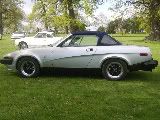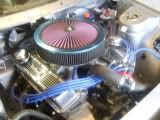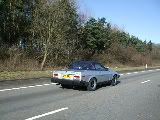Hi,
Find yourself a very quite piece of road where you can see along way ahead, then drive down the middle [:0] carefully with the centre of the car either side of the white lines, does it still pull ?
You would be amazed how many owners of car's I have sat next too say there car's ' pull to the kerb ' and demo it by driving down the road with no hands on the wheel [V] would love to ask them " where does it say in the highway code, let go of the steering wheel once 30 mph is reached [:o)] ? "
More often than not its the camber of the road, which is why it don't pull whilst driving dead down the centre.
Failing that swap wheel front to rear ( rather than side to side, keeps the rolling direction the same ) Is there any tyre wear ? Are they the same make and age ( look at the DOT code it will give week number and year of manufacture ) Any play in the steering or suspension, the garage that tracked your car should have checked this first for obvious reasons !
Cheers John




LIVE LIFE A QUARTER OF A MILE AT A TIME!
1976 Speke FHC BEAUTY FITTED WITH OVERDRIVE GEARBOX
1979 3.5 FHC CURRENTLY GARDEN ART !
1982 2.0 DHC NOW A 4.6, BUILT NOT BROUGHT !!!!

 [img][IMG]http://i615.photobucket.com/albums/tt234/nickmi/TR7%201975/Yellow.jpg[/img]
[img][IMG]http://i615.photobucket.com/albums/tt234/nickmi/TR7%201975/Yellow.jpg[/img]




